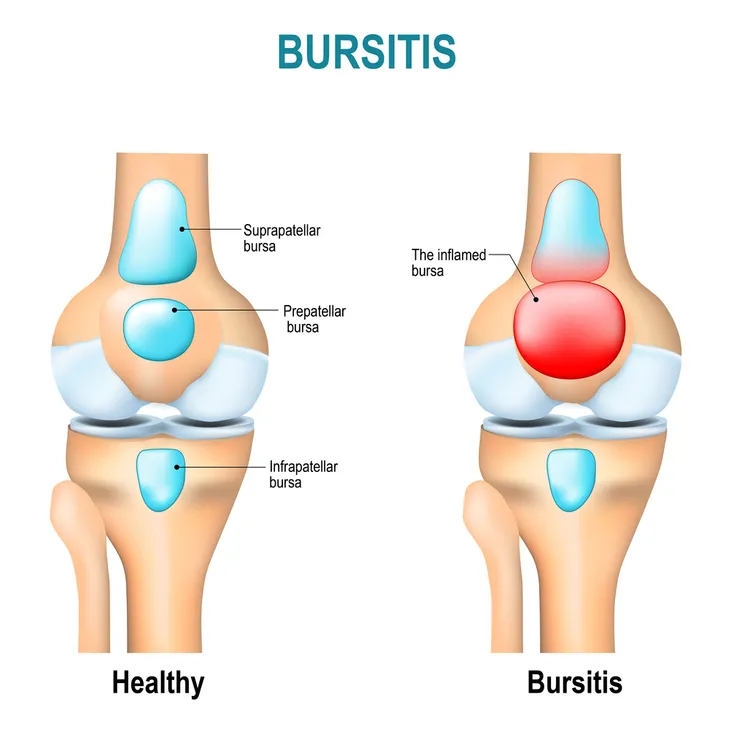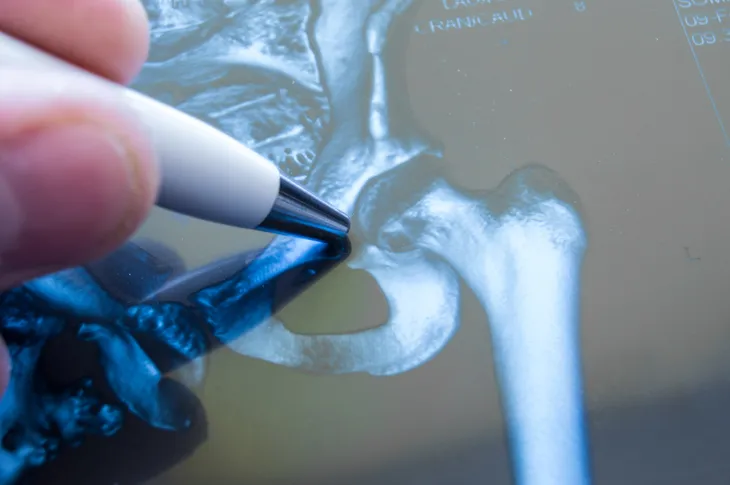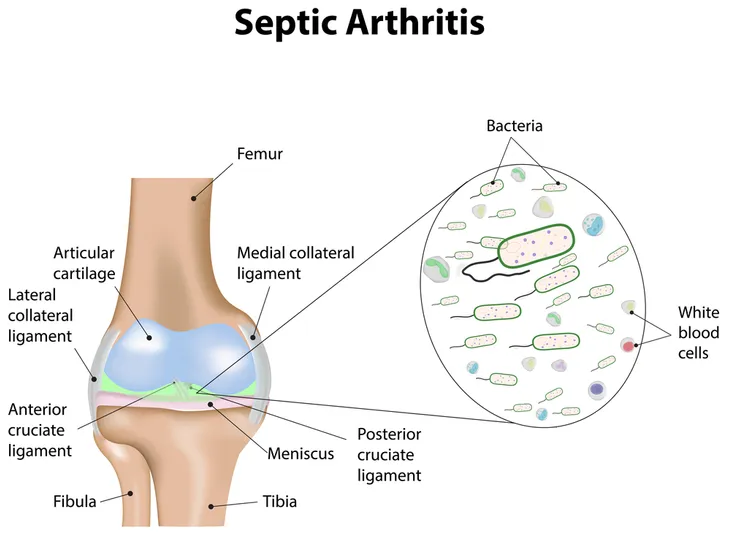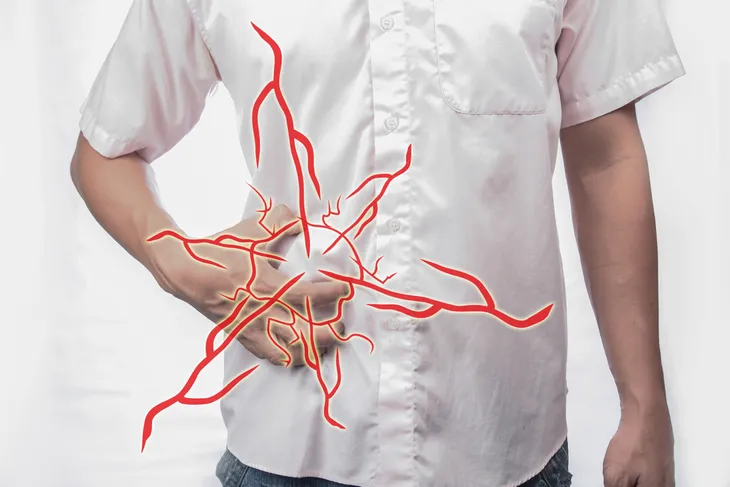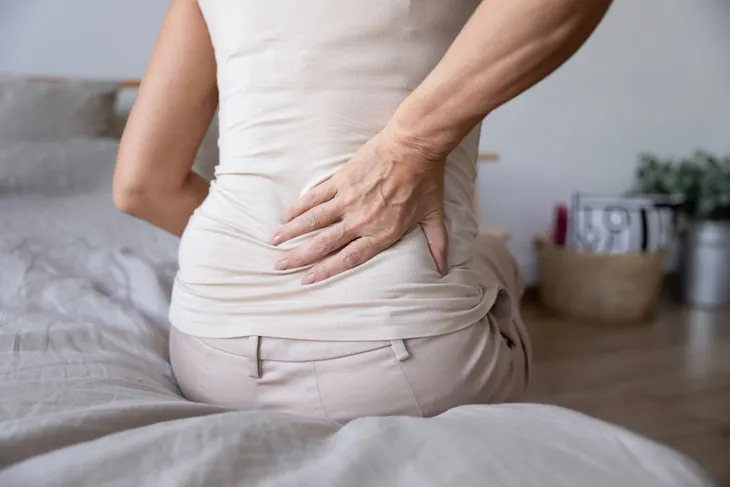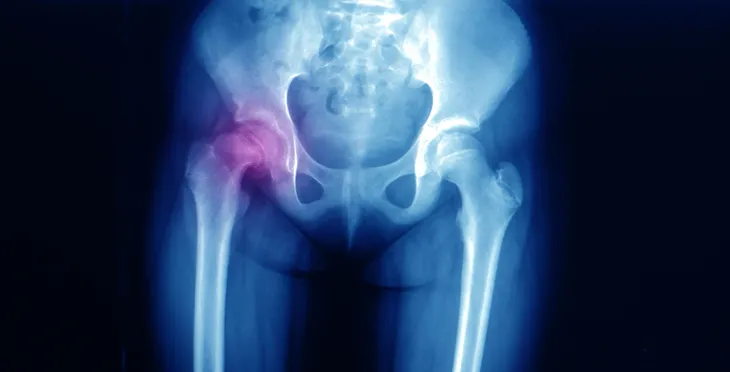Hip pain is a very common complaint seen by physicians. It may affect individuals of any age. In a study done at Johns Hopkins Medical School, 14.3-percent of adults 60-years and older reported significant hip pain on most days over the preceding 6-weeks.
Hip pain may be caused by a wide variety of problems including arthritis, injuries, compressed nerves, and other problems. Hip pain is generally localized to one of 3 regions of the body: anterior (front) hip and groin, posterior (back) hip and buttock, or lateral (side) hip. The 10 common causes of hip pain are…
Bursitis
Bursitis is inflammation of small fluid-filled sacs that cushion the bones, muscles, and tendons near joints. These sacs are referred to as bursae. Bursae are located near large joints such as the shoulder, knee, ankle, elbow, and hip. They help reduce friction around or near a joint. The etiology of bursitis is overuse or direct trauma to a joint. It is the most common cause of hip pain.
There are 2 major bursae in that hip that may become inflamed. One is located near the greater trochanter, which is the bony point of the hip. Inflammation of the bursa in this area is termed trochanteric bursitis. The condition is characterized by lateral hip pain. The iliopsoas bursa is the other major hip bursa and is located inside the hip. Inflammation of the bursa in this area is termed iliopsoas bursitis, which occurs less often than trochanteric bursitis. The condition is characterized by anterior hip or groin pain.
Osteoarthritis
Osteoarthritis is the most common type of arthritis. It represents inflammation of bones and joints. The inflammation causes gradual deterioration of the cartilage at the ends of bones found in joints. Osteoarthritis can damage any joint in the body, but most often affects the hands, knees, hips, and spine. The disease is progressive (gradually worsens over time) and has no cure. It is one of the most common causes of hip pain in individuals over 65-years of age.
Hip pain caused by osteoarthritis is often localized to the anterior hip and groin. As cartilage is worn away, the head of the femur (thigh bone) comes into direct contact with the inner socket of the hip. The rubbing together of these bones leads to pain. Symptoms may include a constant, deep, aching pain in the hip along with stiffness that tends to worsen with prolonged standing.
Hip Fracture
A hip fracture is a medical emergency and may have complications that can be life threatening, which is why this fracture requires immediate surgery. The risk of hip fracture increases with age. Older people have an increased risk for hip fracture due to age-associated thinning and weakening of bone (osteoporosis). Osteoporosis affects mostly women, but men over 65-years of age are also at risk for the development of osteoporosis.
Younger very active individuals may be susceptible to stress fractures of the hip. Stress fractures are tiny, imperceptible cracks in bone. Hip stress fractures are caused by repeated high-impact activities. The injury typically causes pain in the anterior hip or groin that worsens with activity. Diagnosis may be difficult as some hip stress fractures do not show up on traditional X-rays. Bone scans and magnetic resonance imaging (MRI) are often needed for an accurate diagnosis.
Tendonitis
Tendonitis is characterized by inflammation of a tendon. A tendon is tissue that attaches muscles to bones. Tendonitis can affect any tendon in the body, but most commonly occurs around shoulders, elbows, wrists, knees, and hips. It is a common sports, hobby, and occupational injury and the etiology is typically overuse. An inflamed tendon has an increased risk of rupture, which would require surgical repair.
Hip tendonitis is commonly referred to as iliacus tendinitis or iliopsoas tendonitis. The iliacus and iliopsoas muscles flex the hip and are joined by a tendon at the top of the femur (thigh bone). People at high risk for this type of tendonitis include ballet dancers, gymnasts, older individuals with uneven or unsteady gait, and long distance runners. The condition is characterized by anterior hip and groin pain. An audible pop may be heard when the hip is flexed or extended.
Osteonecrosis
Osteonecrosis is a condition resulting in the death of bone tissue due to a loss of blood supply. It often culminates in the collapse of bone. Other names for osteonecrosis include avascular necrosis, aseptic necrosis, and ischemic necrosis. The disease can affect single or multiple bones. Common sites of the disease include the hips, knees, shoulders, and ankles. Osteonecrosis of the jaw is rare and has been linked to the use of bisphosphonate medications, which are used in the prevention and treatment of osteoporosis.
Osteonecrosis most commonly affects the hip. It specifically affects the head of the femur (thigh bone), which is a component of the hip joint. Common risk factors for the development of hip osteonecrosis include long-term use of high-dose steroids and excessive alcohol intake. It most commonly occurs between the ages of 40 and 65. Men develop the disease more often than women.
Septic Arthritis
Septic arthritis is an exquisitely painful infection in a joint. Microorganisms traveling in the bloodstream can infect a joint. Alternatively, a puncture or penetrating injury can introduce microorganisms into a joint. The disease can be caused by bacterial, viral, or fungal elements. The most common etiology of septic arthritis is the bacteria Staphylococcus aureus, or staph. The most common joints that can become septic are the knees and hips.
Risk factors for septic hip arthritis include being aged 80-years or older, diabetes, rheumatoid arthritis, recent joint surgery, and hip or knee prostheses. Anterior hip pain is a major symptom of septic hip arthritis. Other symptoms may include fever and a swollen, red, and warm joint. Drainage and antibiotics play a big role in the treatment of septic hip arthritis. Prompt diagnosis and treatment is required to prevent joint degeneration and permanent damage.
Hernias
A hernia occurs when part of the intestines protrude through a weak point in the abdominal wall muscles. The most common types of hernia occur in the inner groin (inguinal), outer groin (femoral), surgical incisions (incisional), and belly button (umbilical). Hernias can be caused by heavy lifting, straining during bowel movements, excess weight, and chronic coughing or sneezing. The majority of hernias have to be surgically repaired.
Inguinal and femoral hernias are generally recognized as causes of anterior hip and groin pain. The pain is actually referred, as these structures are adjacent to the hip joint. As of late, increased consideration has been given to sports hernias, which are not readily felt (nonpalpable). Sports hernias are also referred to as athletic pubalgia. These hernias can cause chronic anterior hip and groin pain in athletes. The condition affects athletes in sports such as football, ice hockey, wrestling, and soccer.
Sciatica
Sciatica represents irritation or inflammation of the sciatic nerve. It is the largest single nerve in the human body and originates in the lower back and emerges just below the buttocks and travels down the back of the leg. Sciatica is not so much a diagnosis, as it is a symptom of an underlying medical condition. Causes of sciatica include lumbar disc herniation, spinal stenosis, piriformis syndrome, and degenerative disc disease.
A major symptom of sciatica is anterior hip and buttock pain. Other symptoms of sciatica may include low back pain that may radiate down the leg and into the foot and toes; tingling or numbness in the lower extremities; and weakness in the leg and foot. Symptoms of sciatica usually occur only on one side of the body. The prognosis of sciatica is excellent as most individuals do not need surgery and episodes usually resolve within 6-weeks.
Slipped Capital Femoral Epiphysis
Slipped capital femoral epiphysis is an uncommon disease of the adolescent hip. An epiphysis is an area at the end of a long bone. For unknown reasons, the head of the femur (thigh bone) slips backward in the hip joint and separates from the main part of the femur. It actually represents a fracture of the growth plate. The disorder may affect both hips in up to 20-percent of adolescents. Risk factors for slipped capital femoral epiphysis include male gender, obesity, hypothyroidism, Down syndrome, falls, and trauma.
Hip pain is a major symptom of slipped capital femoral epiphysis. The left hip is more commonly affected than the right hip. Other symptoms may include knee pain, an intermittent limp, an outward turned leg, and decreased range-of-motion in the hip. The severity of the disease may be characterized as mild, moderate, or severe. Complications of slipped capital femoral epiphysis may include hip osteonecrosis and hip osteoarthritis later in life.
Meralgia Paresthetica
Meralgia paresthetica, also called Bernhardt-Roth syndrome, is caused by compression of the lateral femoral cutaneous nerve (a large sensory nerve in the thigh). Compression of the nerve leads to tingling, numbness, and burning in the lateral hip and thigh. The symptoms are usually one-sided, or unilateral, and may intensify with prolonged walking or standing and be relieved by sitting. The disease may be bilateral in up to 20-percent of individuals.
Repetitive motions of the legs, pregnancy, weight gain or obesity, wearing tight clothing, wearing tool belts, and recent injuries to the hip may cause the nerve entrapment leading to meralgia paresthetica. The condition is more common in diabetics than in the general population. The goal of treatment for the disease is the removal of the cause of the nerve compression. The prognosis for meralgia paresthetica is excellent and surgical decompression of the lateral femoral cutaneous nerve is rarely needed.

